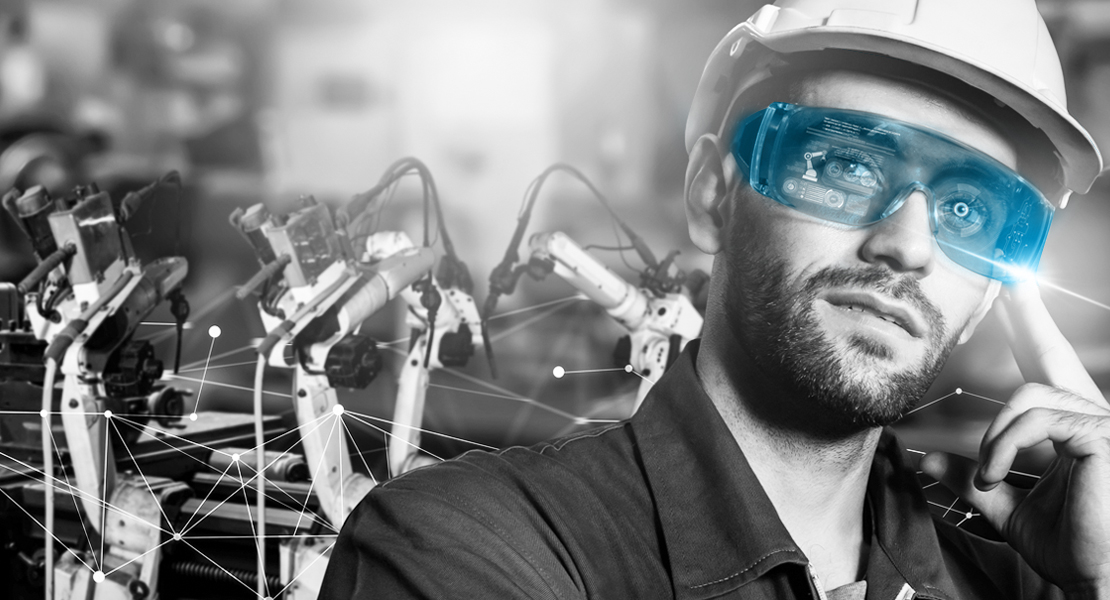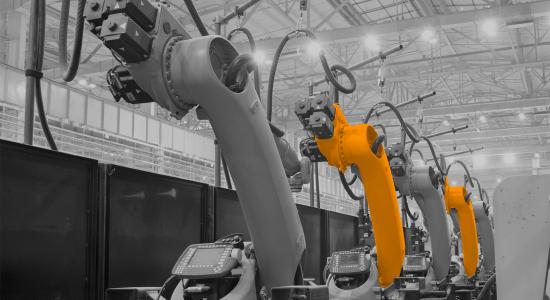XR technologies hold great potential for process optimization, from which the production and manufacturing industry can benefit in particular. In the context of the current crisis, it offers a wide range of opportunities for low-contact work organization. But what makes them particularly attractive - even beyond the Corona crisis: They make a contribution to sustainability that should not be underestimated.
The coronavirus pandemic is driving XR technologies
The onset of the coronavirus pandemic in January 2020 abruptly confronted many companies with new challenges. Industrial and manufacturing sectors have been hit especially hard as global supply chains, processes, and work procedures have had to be dynamically adapted within a very short time while cooperation has been restricted by remote working. The result has been the emergence of digital work procedures in the ensuing months as an essential foundation for success during the COVID-19 crisis. The use of XR technologies has been an especially significant key for opening new dimensions of effective collaboration among employees. Yet it is often unclear what investments are needed, how well the potential for heightened efficiency and sustainability has actually been mined, and whether the possible XR use cases will still be relevant once the coronavirus crisis has finally passed.
The potential of XR as demonstrated by AkzoNobel
The relocation of one of the factories belonging to the company AkzoNobel from Singapore to Vietnam was unexpectedly interrupted when the borders were closed without any advance warning. The new restrictions made it impossible for the experienced team from Singapore to supervise and support the first production lots in the new factory in Vietnam, giving rise to a risk that the project would be delayed indefinitely.
Wanting to avert this risk, AkzoNobel decided to use XR technologies as a means of carrying out remotely the necessary collaboration among employees. Besides securing the on-schedule completion of the plant relocation, valuable employee travel time (including the travel expenses that would otherwise have been incurred) as well as the associated CO2 budget were reduced.
Anton Vendelstrand, the automation and design engineer in charge of the project, described very clearly the approach that was taken: “Together with my colleague Sara Khosravi, we procured a pair of augmented reality (AR) glasses. The R&D team in Singapore could then see what colleagues in Vietnam were seeing in real time. For the staff in Vietnam, it was a hands-free solution to get the needed support.”
The range of solutions in the XR environment
The example of AkzoNobel represents only one of the many possible use cases of XR technologies, however, as the figure below shows.
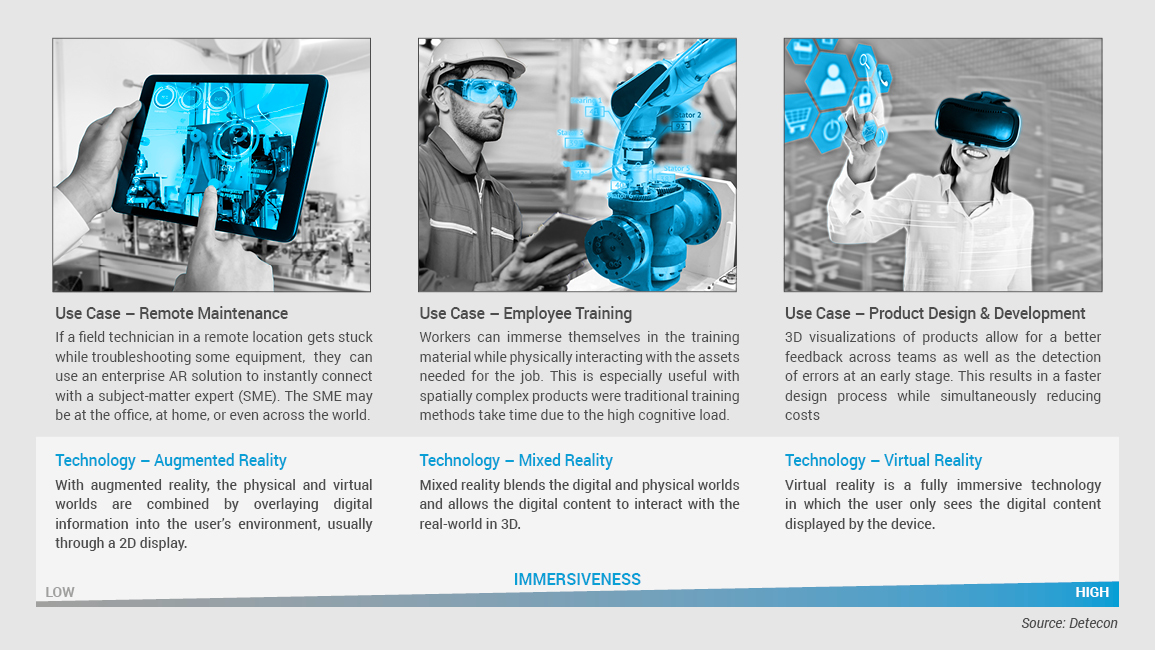
Quantifying concrete benefits
The general advantage of XR technologies — no matter what the use case — is in the conjunction of process and efficiency optimization with simultaneous cost savings. Moreover, another benefit is the enhancement of the company’s sustainability.
An overall positive effect can be realized in most use cases over a comparatively short period of three years as demonstrated by a cost/benefit analysis for the example of a remote maintenance case.
Our model assumes that the company provides ten pairs of HoloLens glasses to a group of 100 employees. The costs of this acquisition, including software licenses and the costs for operation and the required support personnel, amount to a total of €390,000 over three years. Even assuming that no more than four maintenance cases per year can be successfully handled using this technology, the savings potential over the defined period nevertheless comes to €411,000, a positive return on investment.
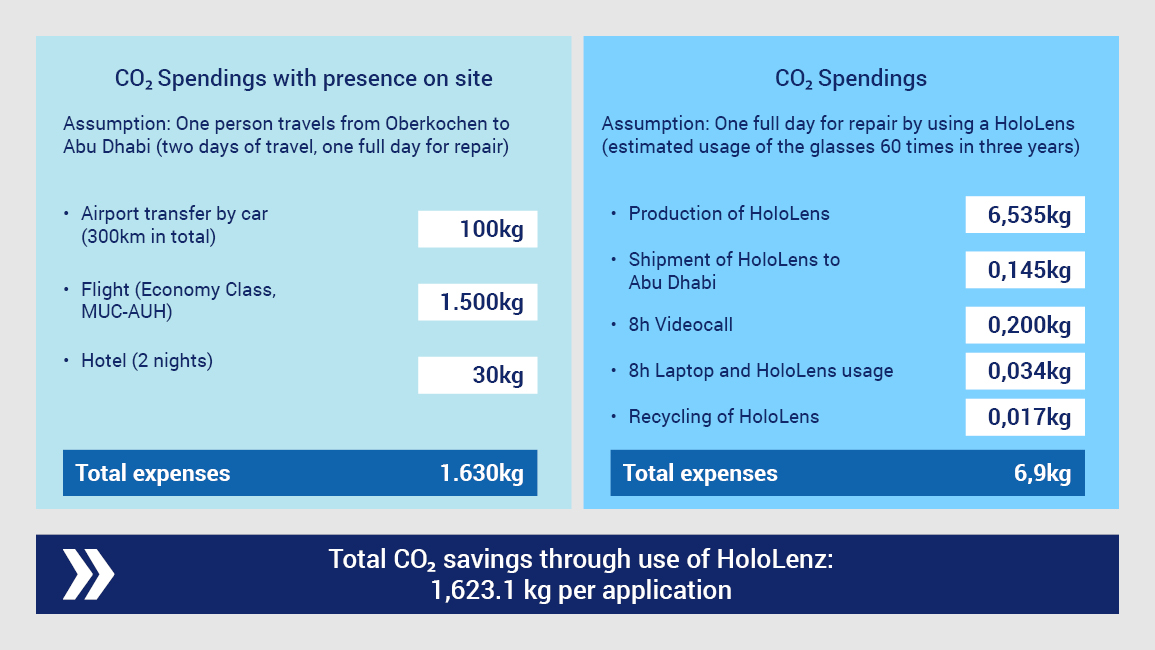
But the carbon footprint of remote maintenance is also a supporting argument for the use of XR technologies such as HoloLens. The effective CO2 savings from the avoidance of travel is more than 99 percent. If, for instance a technician flies from Germany to Abu Dhabi for an assignment, he or she causes emissions of more than 1,600 kilograms of carbon dioxide for the flight, travel to the airport, and overnight stays in the hotel. In contrast, the use of a HoloLens for a one-day operation produces just under seven kilograms of CO2, a figure that even includes a proportional allocation of the CO2 emission during the production of the HoloLens, far and away the greatest contributing factor.
Obviously, the above economic and environmental benefits exist independently of the coronavirus pandemic constraints in various XR use cases for the following reasons:
-
Specific expert knowledge is often not available at the exact moment when required. Performing maintenance remotely by using XR technologies will remain a sensible alternative even after the relaxation of the restrictions imposed by the coronavirus;
-
Employee training can generally be conducted more effectively and at lower cost using XR technologies;
-
The product design process can be carried out virtually using XR technologies for the realization of shorter product development times.
In summary, the rewards from investments in XR technologies are self-evident. Although the costs for the investments in the system may seem prohibitive at first glance, they are recouped after only a few incidents in a year. XR technologies are prime examples of digital technologies that combine business interests with environmental demands in the sense of corporate social responsibility.
Outlook: 5G campus edge as a synergistic complement to XR technologies
Our customer experience reveals that the use of XR technologies can have a positive business impact in a very short period of time, spurring interest in more complex and value-generating use cases. Comprehensive data models and real-time data streams that must be processed in accordance with high security requirements are often essential, however. Moreover, the computing power of XR glasses is limited to some degree. If higher optical quality is to be assured, calculations must be performed on multiple servers. In such a case, smoother rendering of visual content can further benefit from the low latencies of a private 5G network.
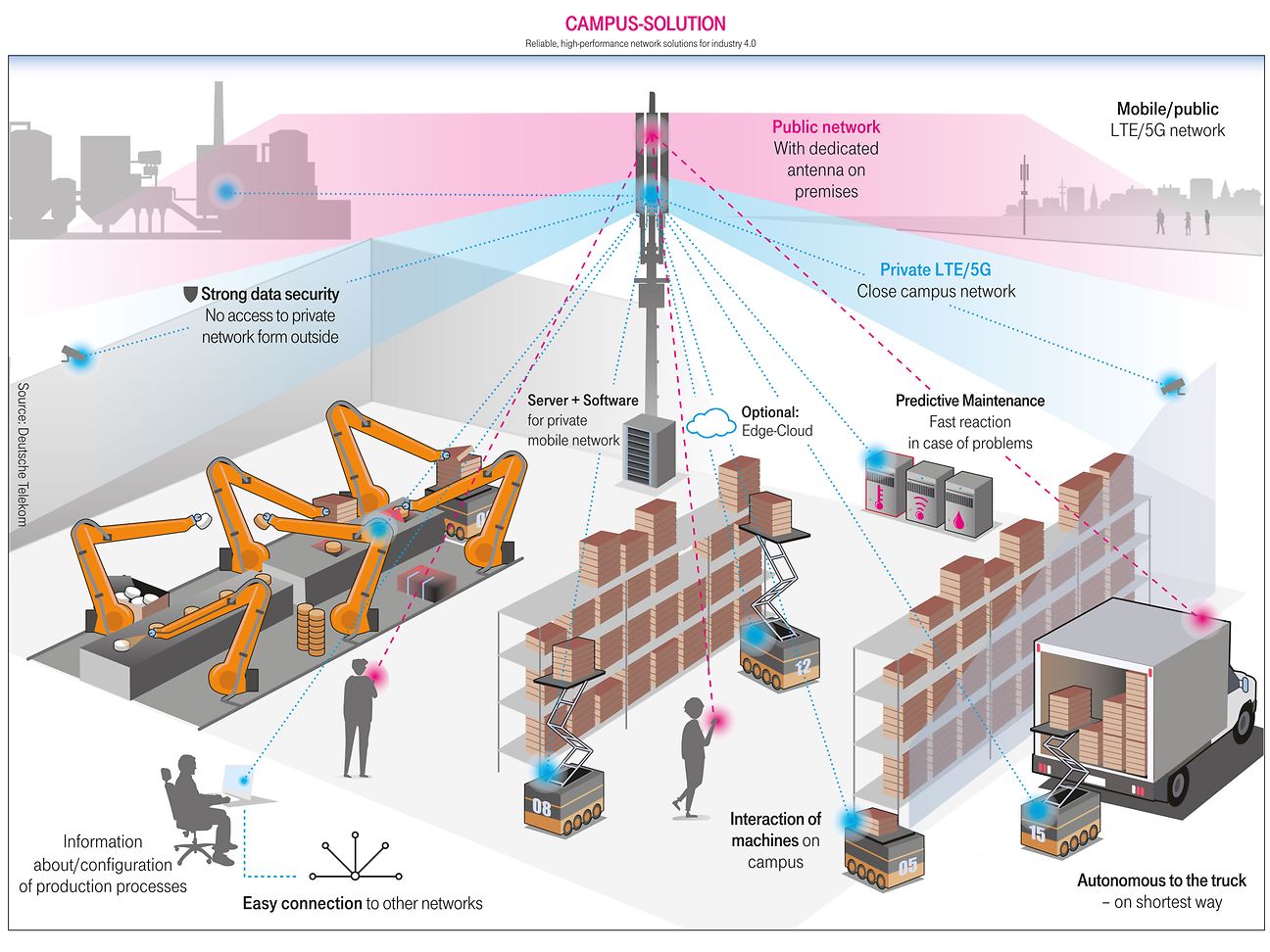
This frequently prompts our clients to complement XR solutions with the use of a 5G campus edge or a private 5G network that broadens the horizons of even greater potential. Of course, XR technologies play no more than a proportional role in the context of all relevant campus edge use cases as can be seen in the example image.

